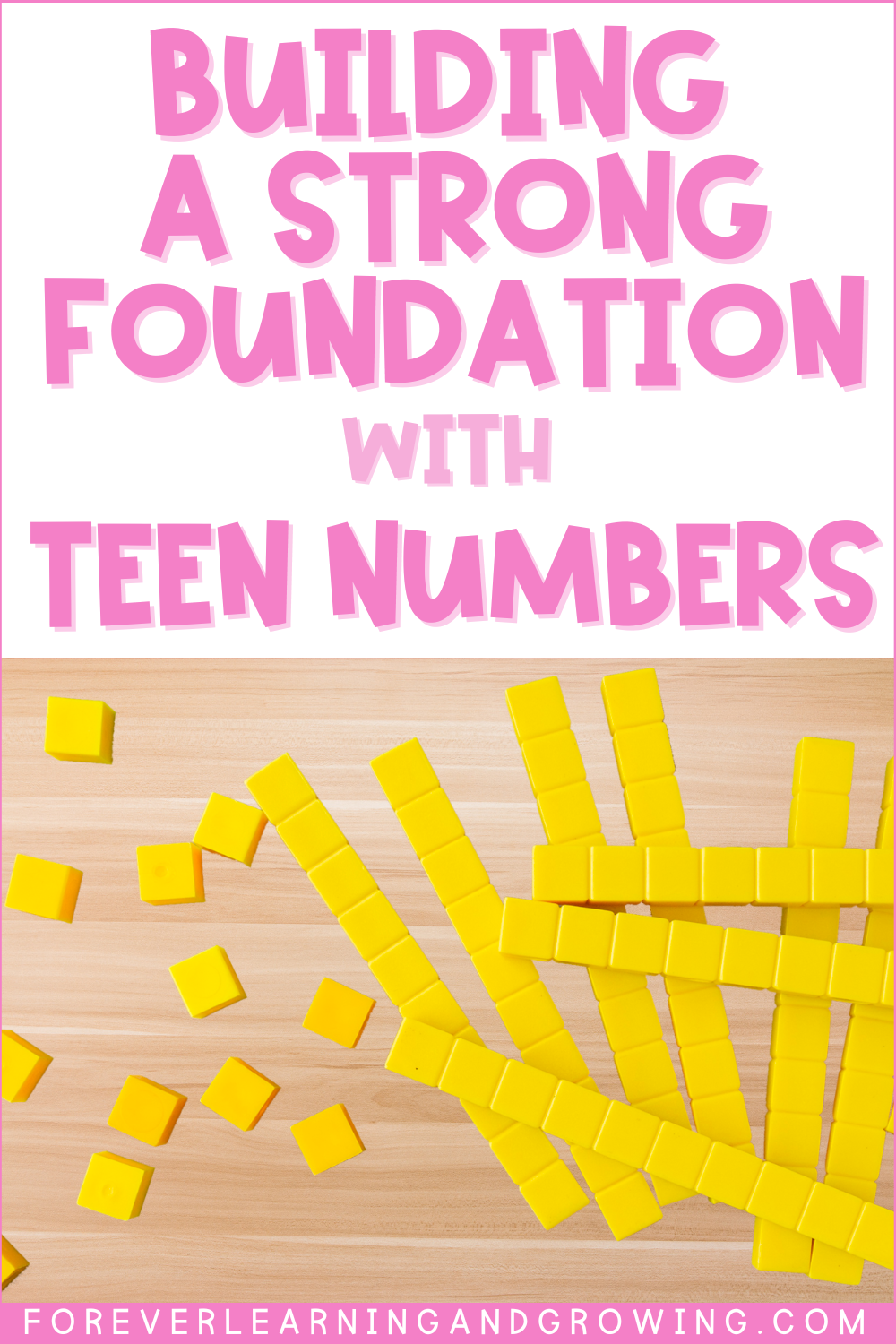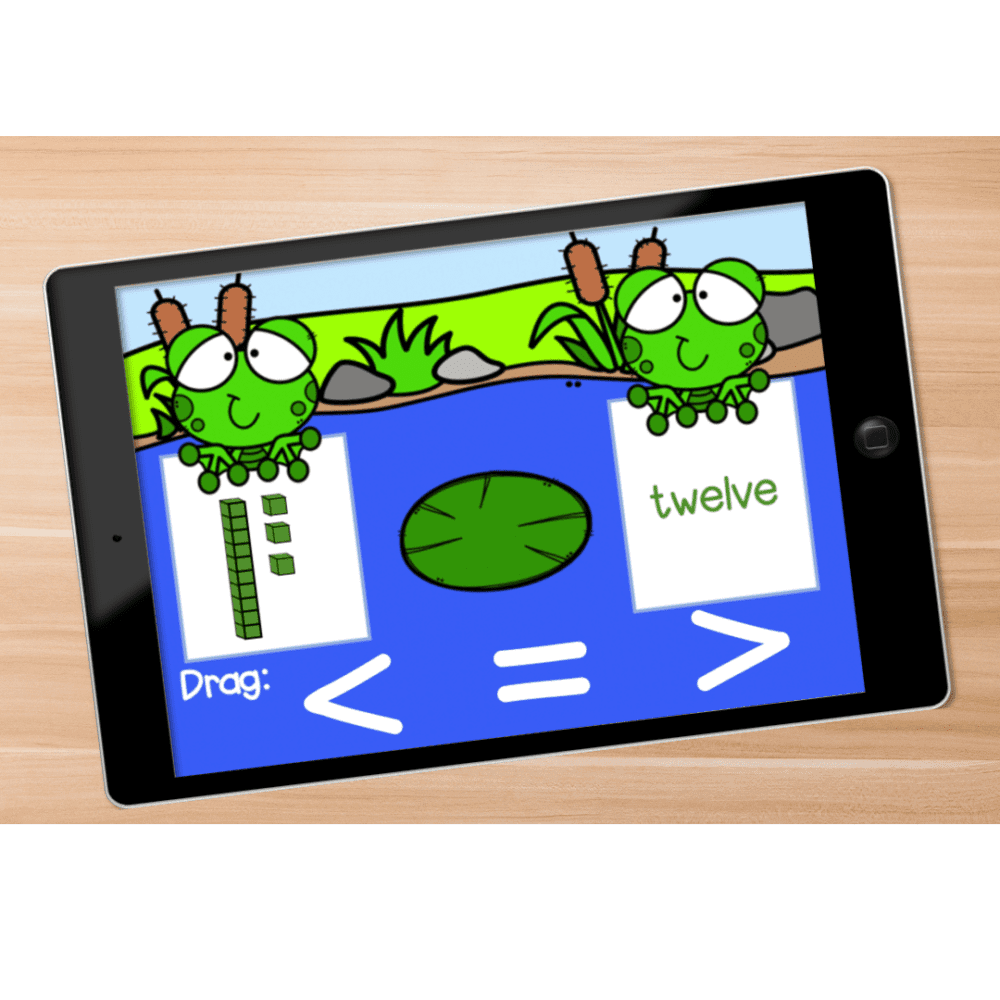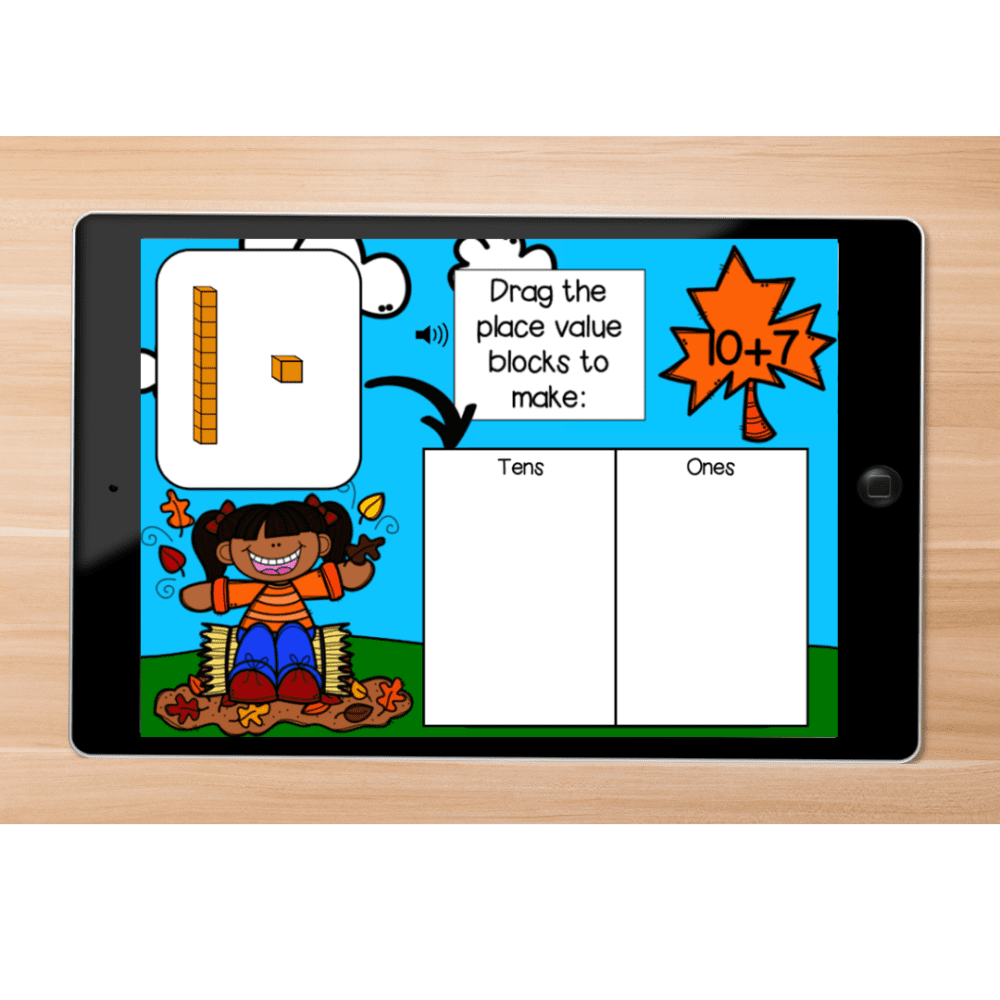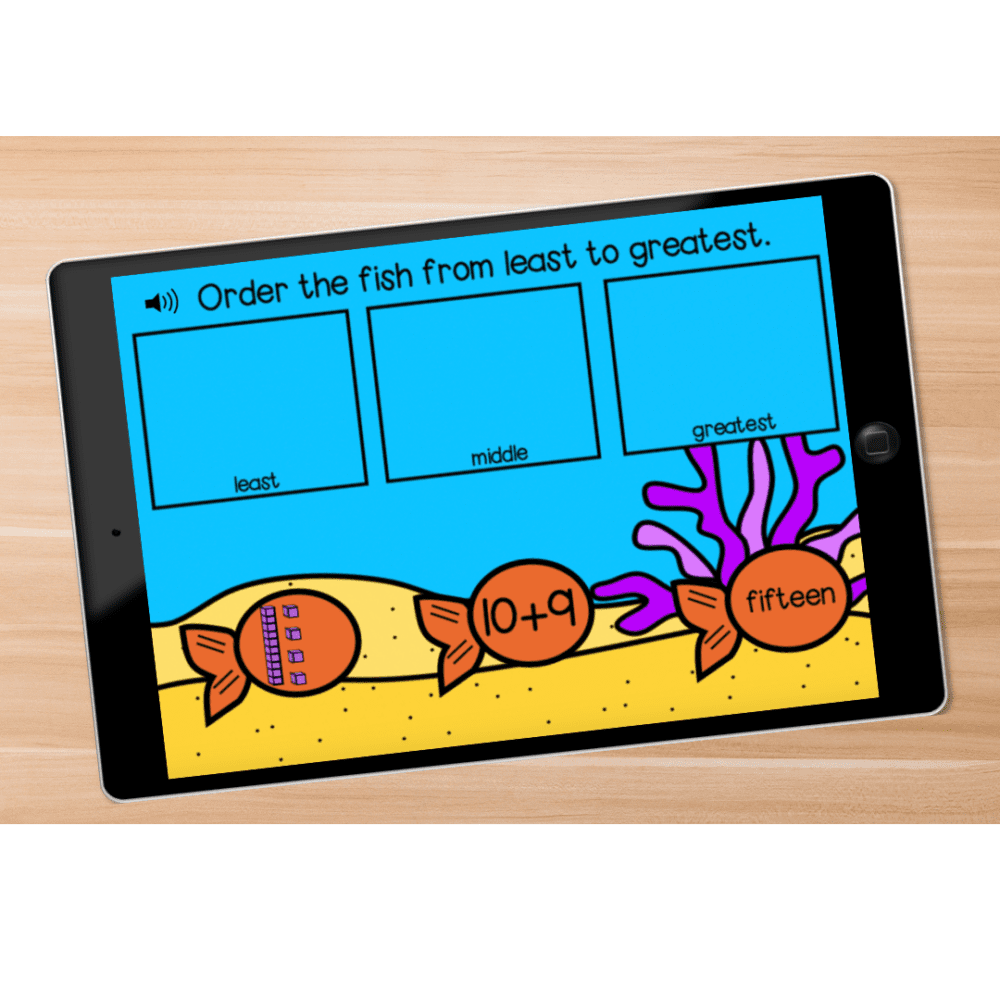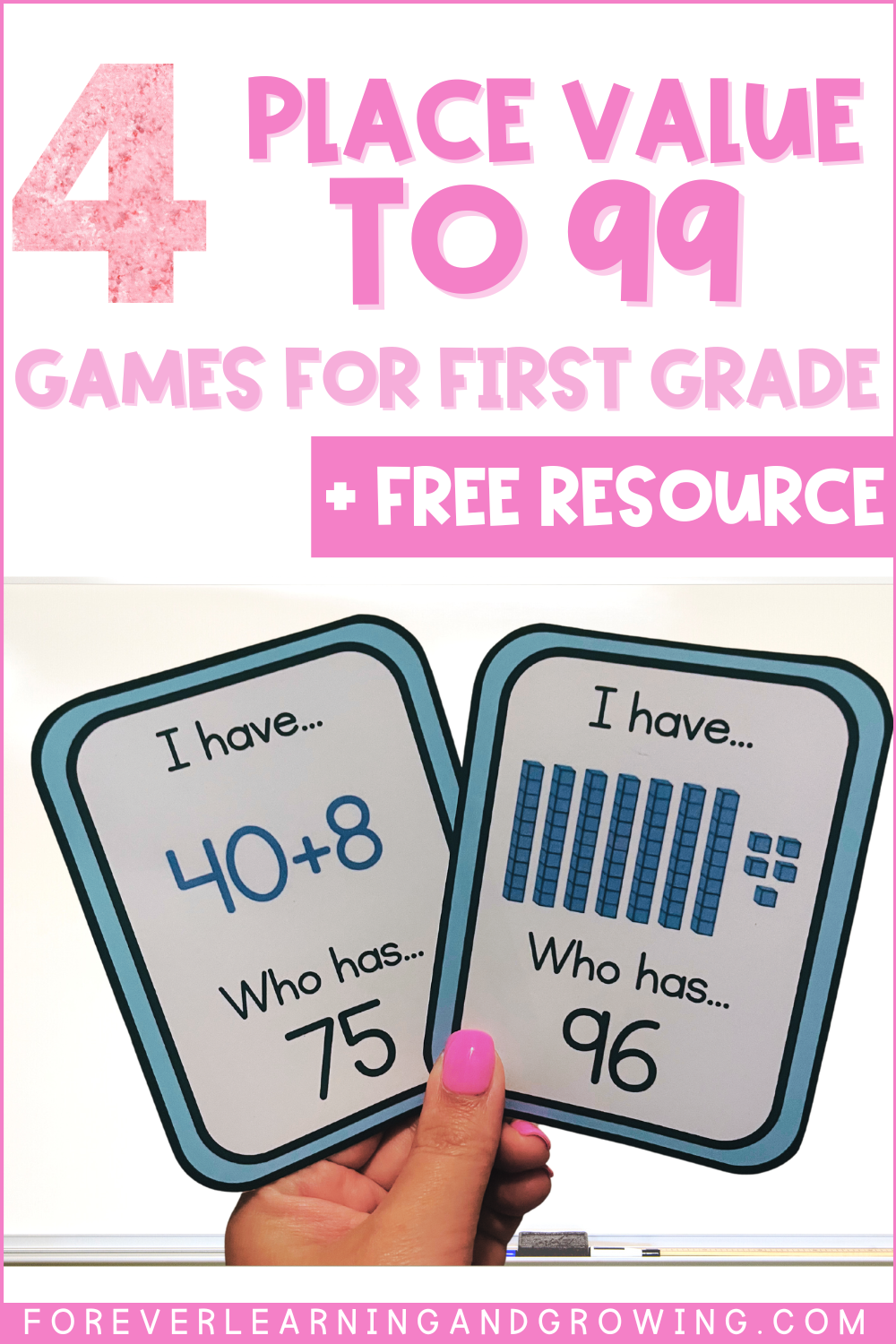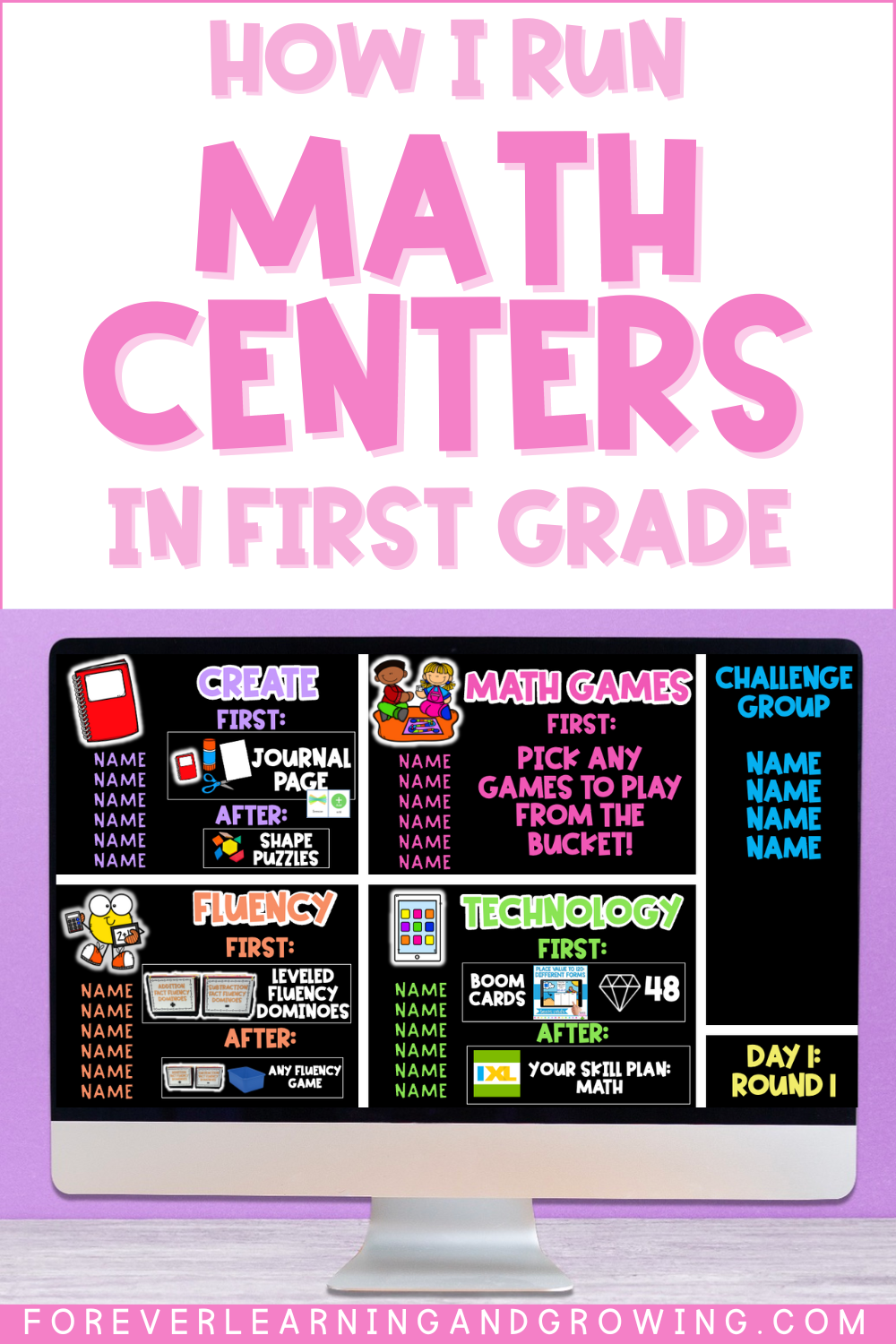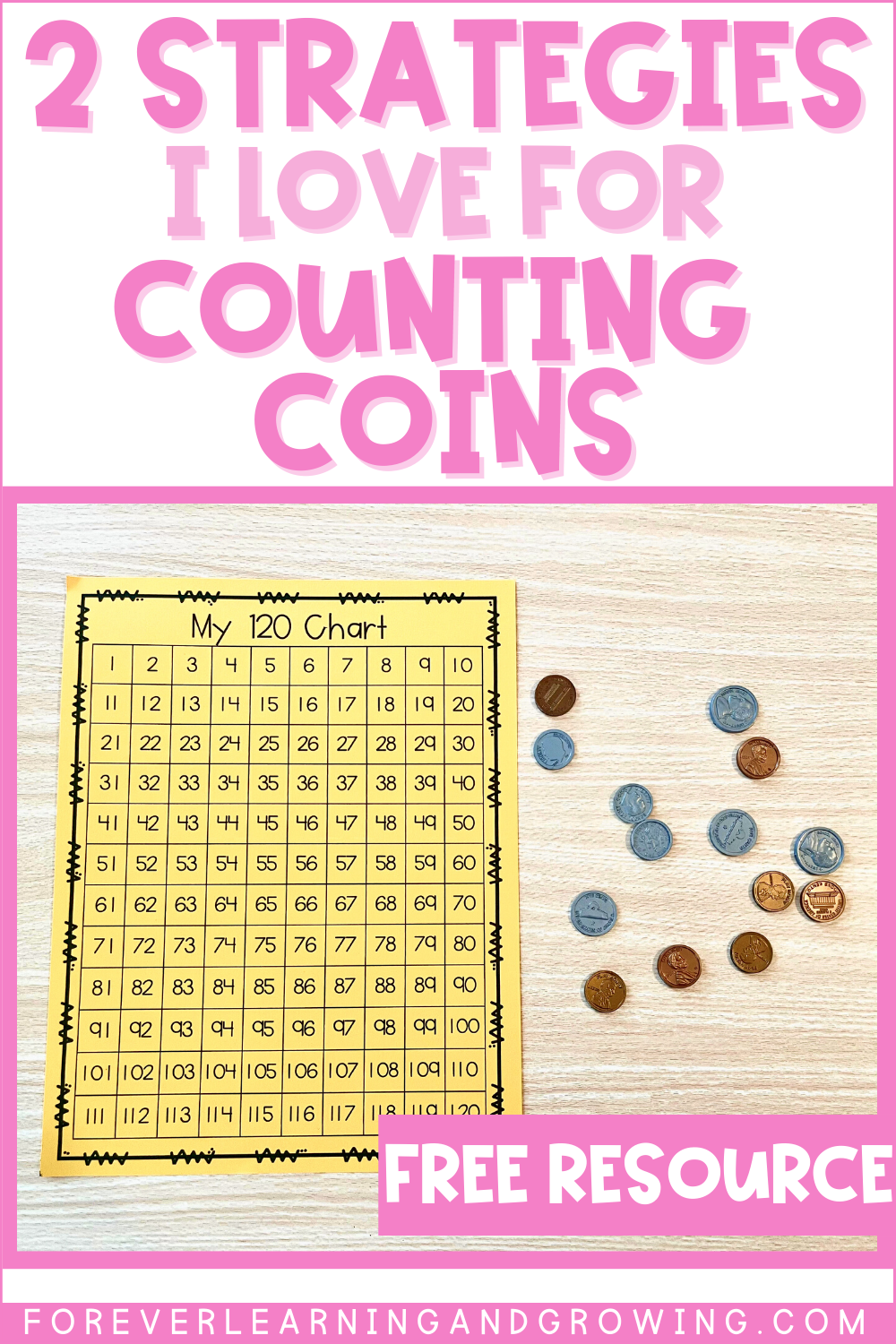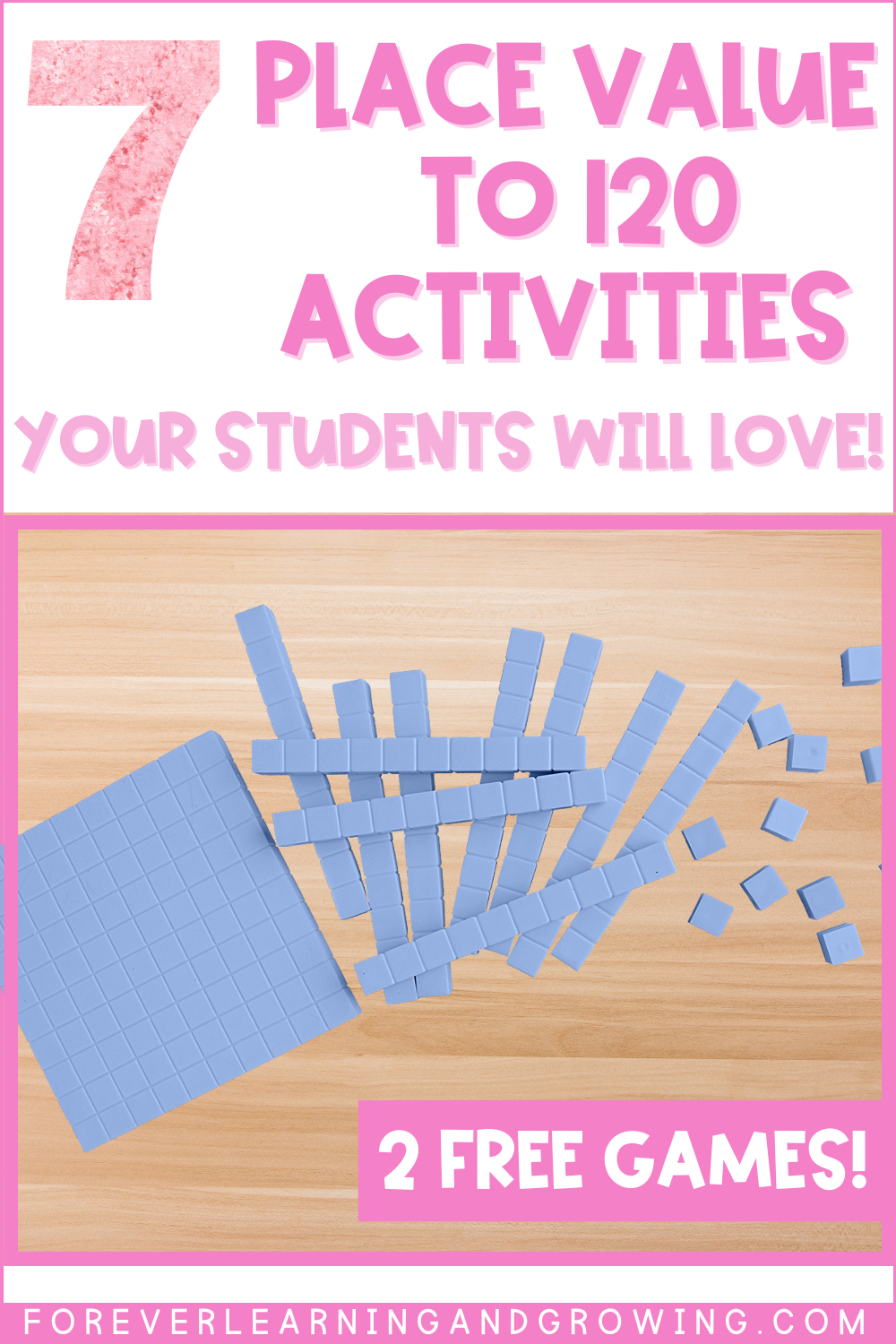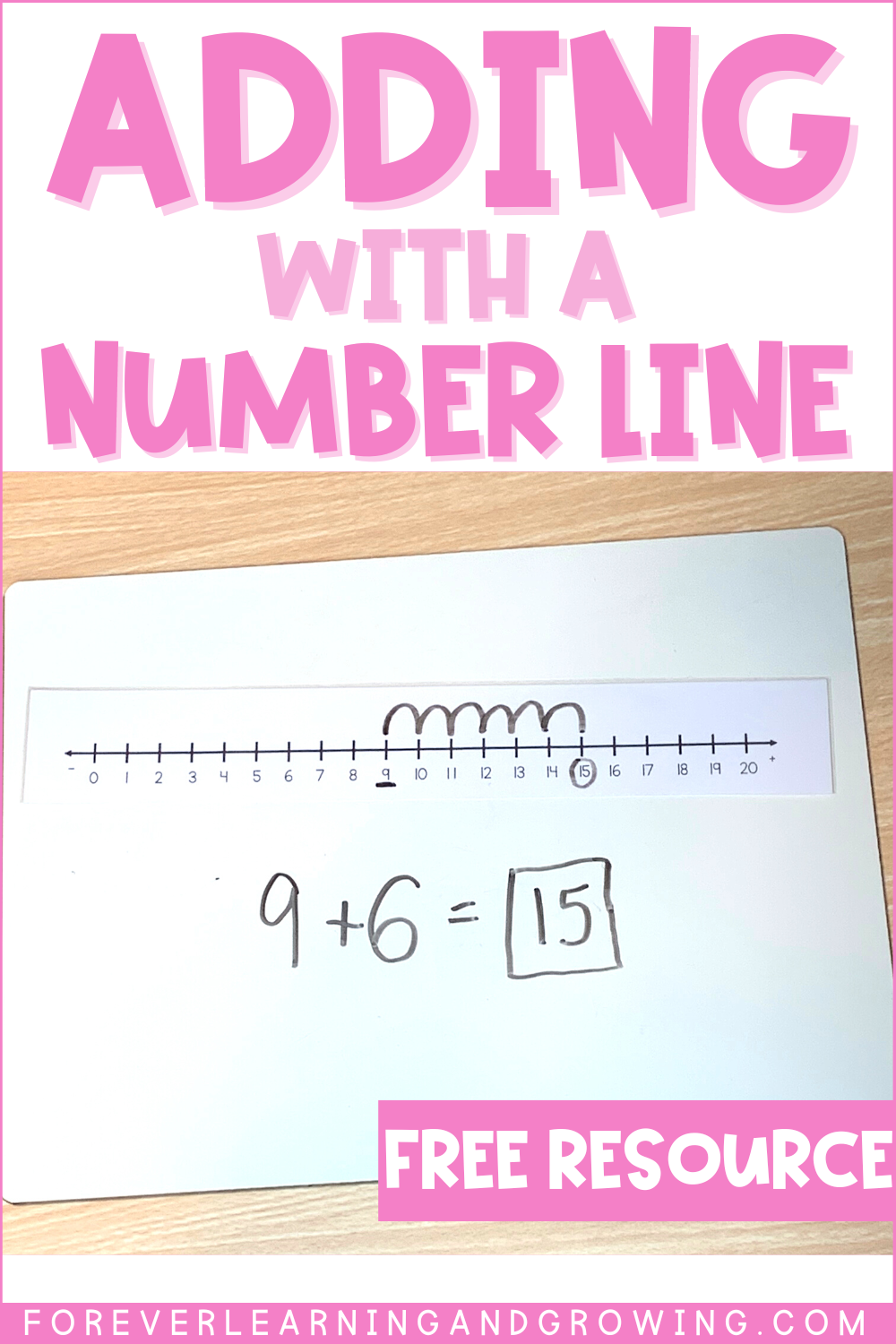Building a Strong Foundation in Place Value with Teen Numbers
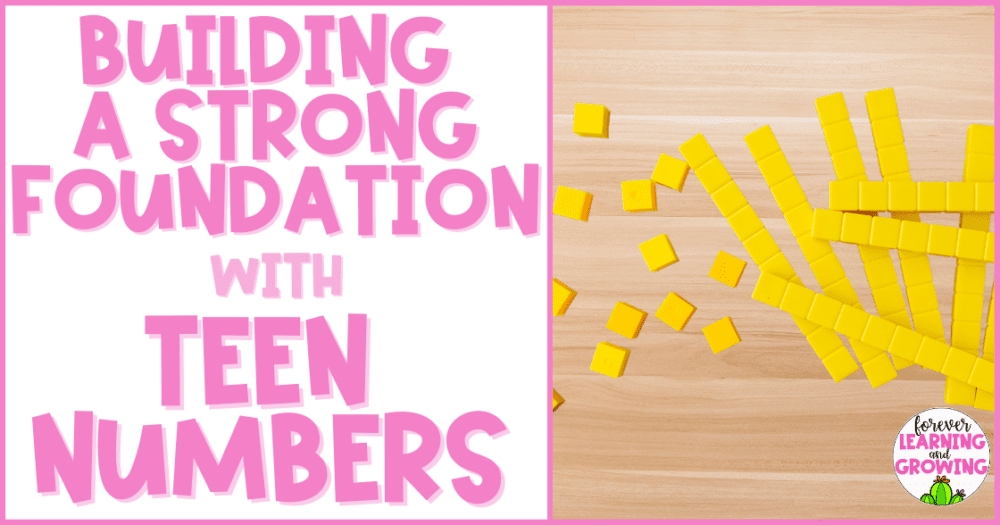
Place value is a fundamental concept in math that lays the groundwork for students’ mathematical growth. In this blog post, I’ll explore three essential aspects of place value that you can introduce starting with teen numbers: comparing numbers, ordering numbers, and representing numbers in different forms. By focusing on these key areas, you’ll get practical strategies and ideas for engaging activities that foster a deep understanding of place value.
Representing Teen Numbers in Different Forms
Representing numbers in different forms helps students develop a deeper understanding of place value. Introduce various forms, including standard form, expanded form, word form, and picture form (base ten blocks). At the beginning of each of our 3 place value units, we fill out the anchor chart below, showing different ways to represent numbers. I leave it hanging at all times as a visual.
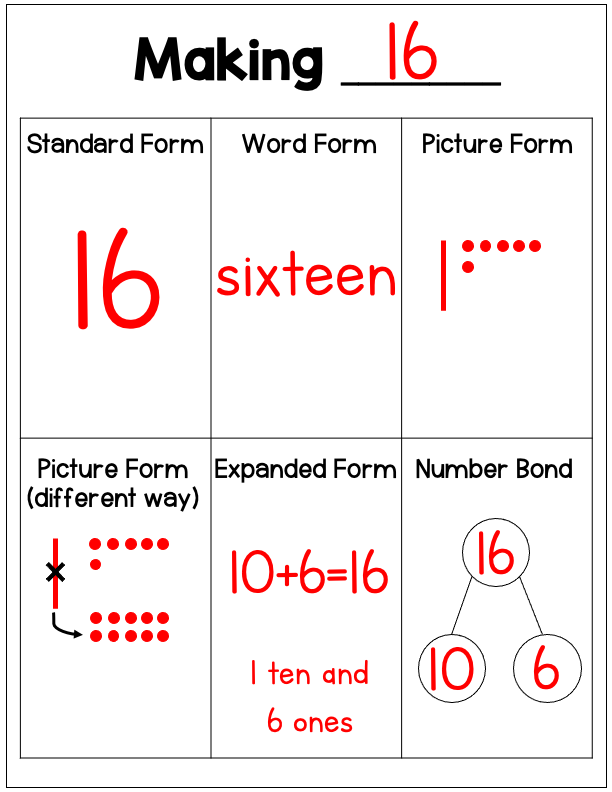
Students have a blank chart in the landscape orientation (similar to the anchor chart above) to use as we practice representing numbers together in each unit. I put it in a page protector so they can use dry erase marker on it (you could also just laminate it). I give them a number & then they fill in all the boxes/number forms on the chart. We also do several examples as well where I might give them one of the number forms (ex. 10+5) and they have to figure out the number and then fill in the rest. While we use this chart altogether the first day or two, this would also be great to practice with in small groups.
A Trick for Teaching Standard Form
Standard form can be a confusing vocabulary word for students, so I came up with a little saying we do each time that stay GLUED in students’ minds. To the tune of Pop! Goes the Weasel I ask in sing-songy voice– “What do you do for standard form?” and students respond “Just write the number!” We practice it probably 8 times in a row, I ask them randomly throughout the rest of that math block and in the following days, and it’s something they never forget after. What I love about this call back is if a student asked me on a paper later on “What does standard form mean?” I could just say “Hmm… what do you do for standard form?” and it’s like a lightbulb went off in their head!
Comparing Teen Numbers
Comparing numbers is an important skill that helps students understand the relative value of digits within a number. To support students in comparing orders, introduce hands-on activities that emphasize the significance of place value. For example, you can use physical manipulatives like base ten blocks or place value disks to represent numbers visually. These manipulatives allow students to see and compare the values of tens and ones in a concrete way.
I also like to really reinforce looking at the highest place value first of a number (in this case, tens) to see which value is greater and then if they’re the same, looking at the ones. For example, if comparing 14 and 19, I would see they both have the same number of tens (1) so I’d then look at the ones place to see which is greater (9). Even though with teen numbers this concept isn’t super helpful, whenever we get to place value to 99 and beyond, it’s something they’ve heard (the foundation has been laid) and can follow the steps for.
Wheel Decide
When it comes to drawing and using the comparison symbols, a resource that we love to use in my classroom for the “we do” portion of our lessons is Wheel Decide. This website is free and perfect for providing students with a variety of numbers or choices in a fun way. I like to use numbers 11-20 when practicing teen numbers. You can use this wheel for numbers 11-20 shown in different number forms (or click here for a wheel using numbers 11-20 shown just in standard form).
You can play this as a class or have students do it in pairs or by themselves. If playing as a class, I pick someone who has been working hard/listening (great classroom management tool!!) to come up and spin the wheel twice. I then have students on their desk (ours are dry erase) write both numbers and include the comparison symbol in the middle. We then read the sentence aloud together or I might call on someone to say it (ex. if it’s 14 < 18, we’d say 14 is less than 18). You can continue using this strategy to do lots of examples (and your students will work hard to come up and spin).
I also have shared the link to the website with a QR code to students so each of them have the wheel on their iPad. They then have to follow the same steps above to compare lots of teen numbers using the correct comparison symbols. I challenge students to not erase any problems after they’re done answering and see how many comparison problems they can fit on their desk. It’s easy to walk around and see if students are correctly comparing or not.
Ordering Teen Numbers
Ordering numbers builds on the understanding of comparing numbers and enables students to arrange numbers in ascending or descending order. Provide students with opportunities to practice ordering numbers using various tools, such as number lines, hundreds charts, interactive digital games, or physical cards. Encourage them to consider the role of tens and ones in determining the order of numbers.
I teach my students to draw a “T-O” chart and write the 3 (or more) numbers they are ordering underneath in any order. Just like with comparing numbers, students need to look at the highest place value first for all the numbers (in this case tens). For the example below, since all numbers have 1 ten, students then look at the ones to help them order the numbers. If ordering from least to greatest, students will find the smallest number, cross it off, and write it on the number line or write that number to show it’s first. Then students find the second smallest number, third smallest number, etc. until all the numbers are crossed off and used.
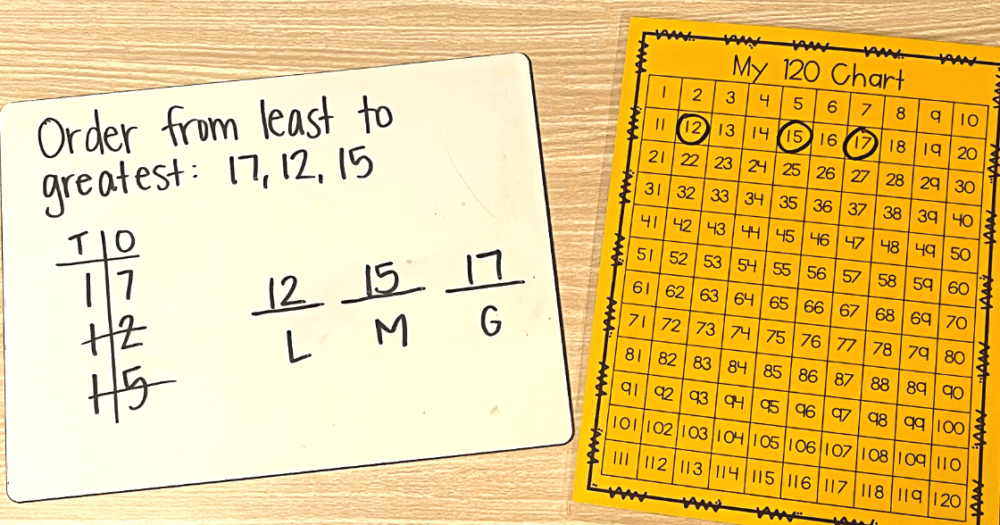
A great way to check this is to also use a hundreds chart. Students must have an understanding of how a hundreds chart works in order for this to work & that you read from left to right on each row. However, for teen numbers, it’s pretty easy to check. Have students circle all the numbers they’re supposed to order on the hundreds chart. Then find the smallest number and run your finger along the chart from row to row (or with teen numbers, just along the second row) to see the numbers in order from least to greatest (you’d have to go backwards for greatest to least).
Activities for Place Value with Teen Numbers
Looking for activities that hit all three concepts listed above? Be sure to check out my Teen Numbers Place Value Boom Cards Bundle!
Can’t get enough teen number activities? Take a look at all of my Teen Numbers resources!
By focusing on comparing numbers, ordering numbers, and representing numbers in different forms within the context of place value with teen numbers, educators can help students develop a solid understanding of place value. If we incorporate hands-on activities, interactive games, and diverse representations, we enable students to grasp place value concepts beyond mere memorization. With consistent practice and engaging experiences, students will gain confidence in comparing, ordering, and representing numbers and easily transfer their understandings for place value to 99 and beyond. (Be sure to check out my post on 4 games for place value to 99!)
As always, I’d love for you to reach out to me if you have any questions or want to learn more about anything referenced here!!

Want to save this pin for later?
